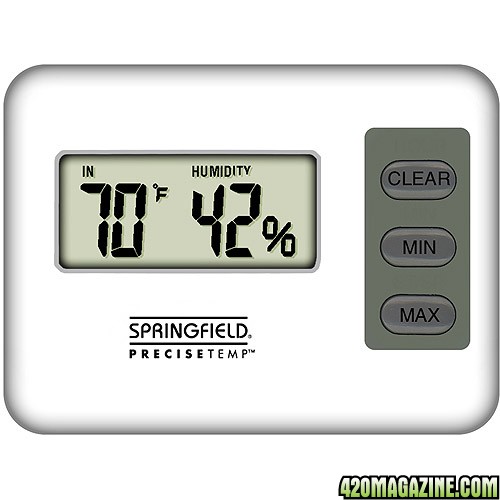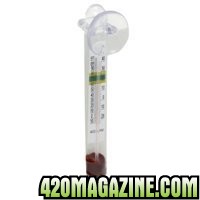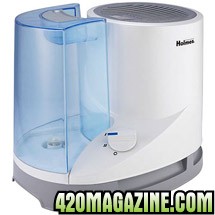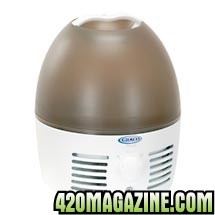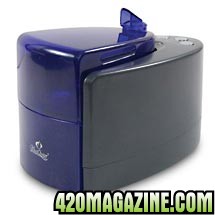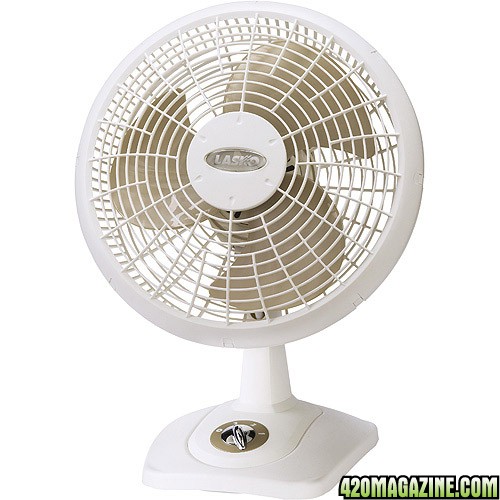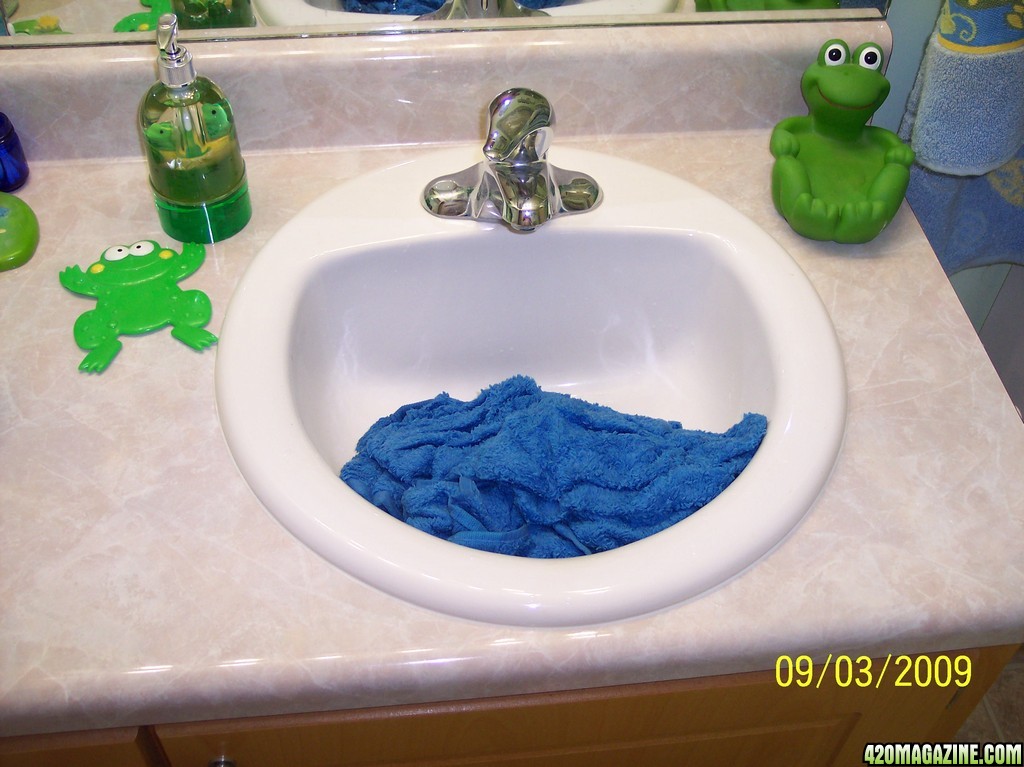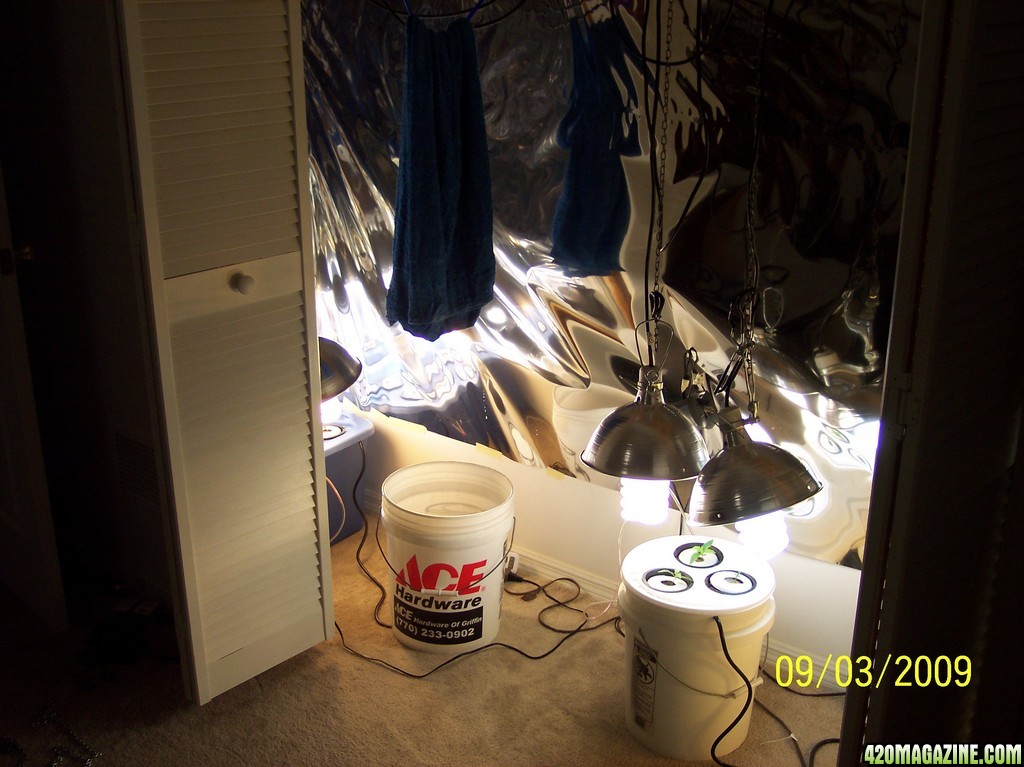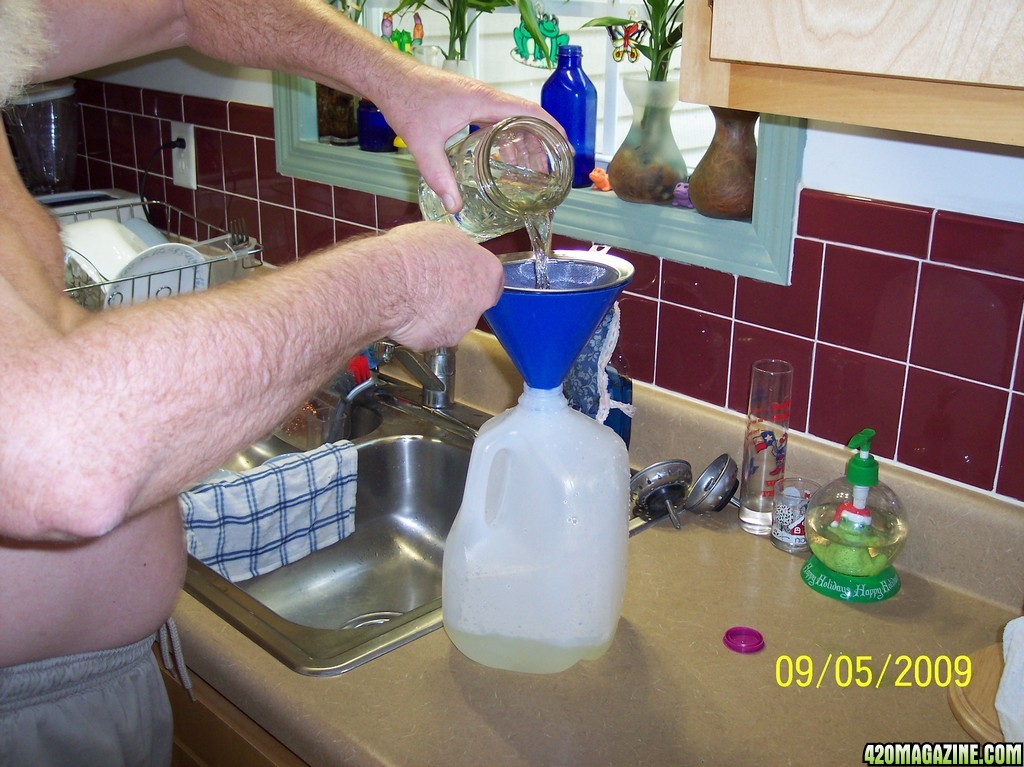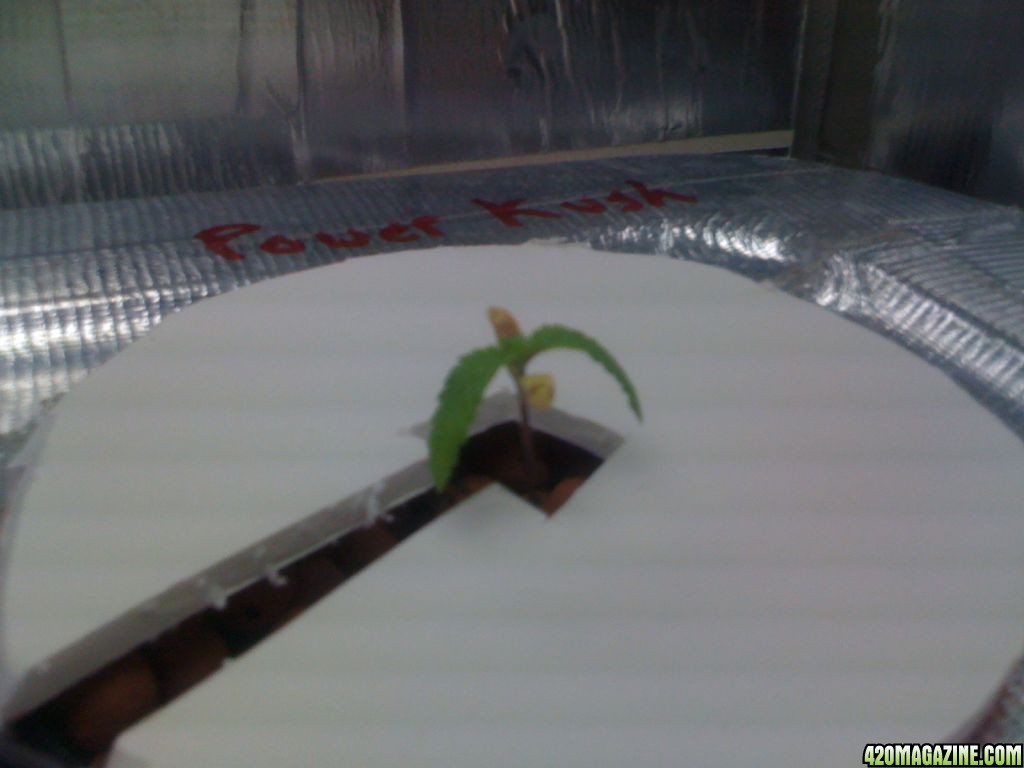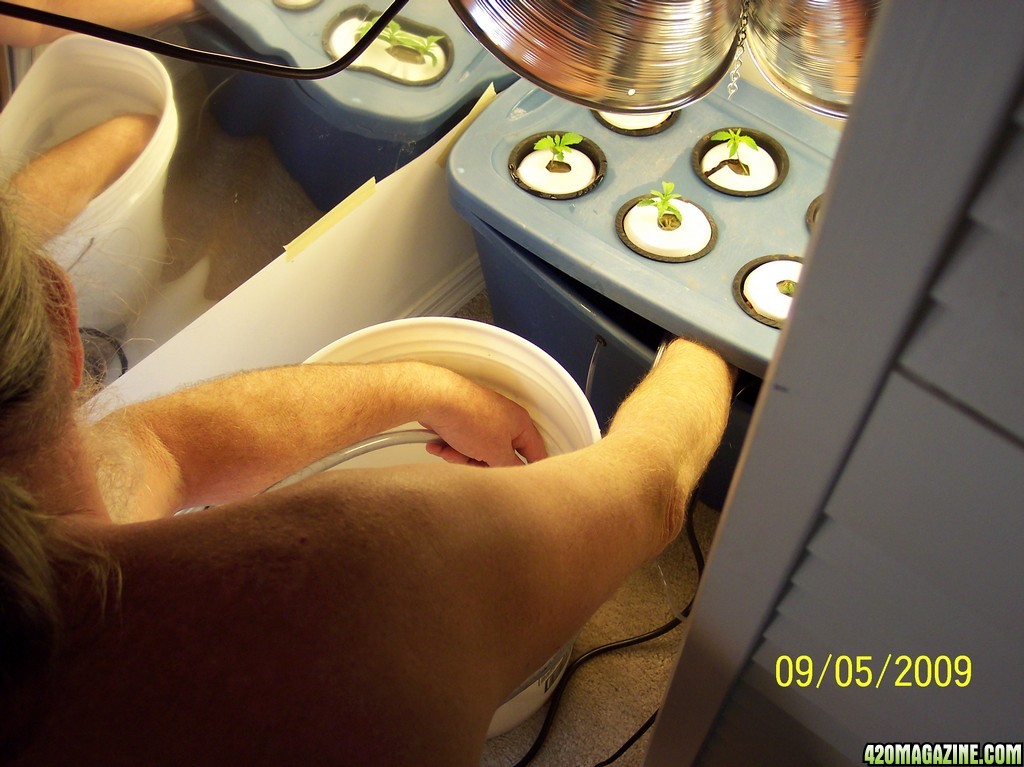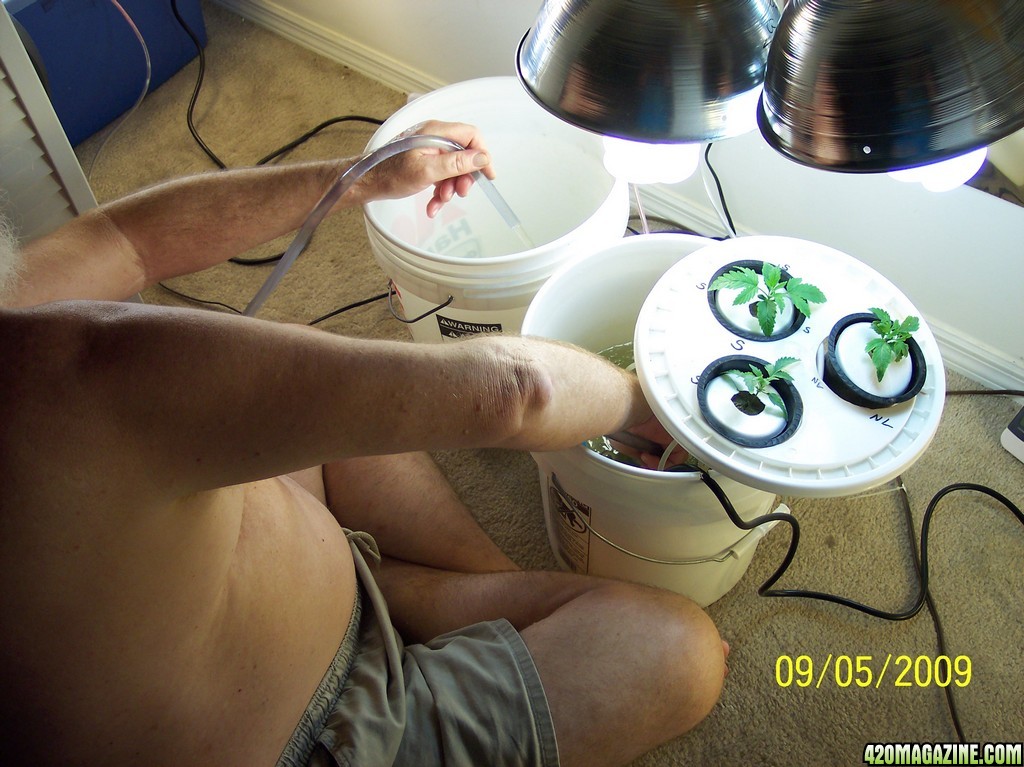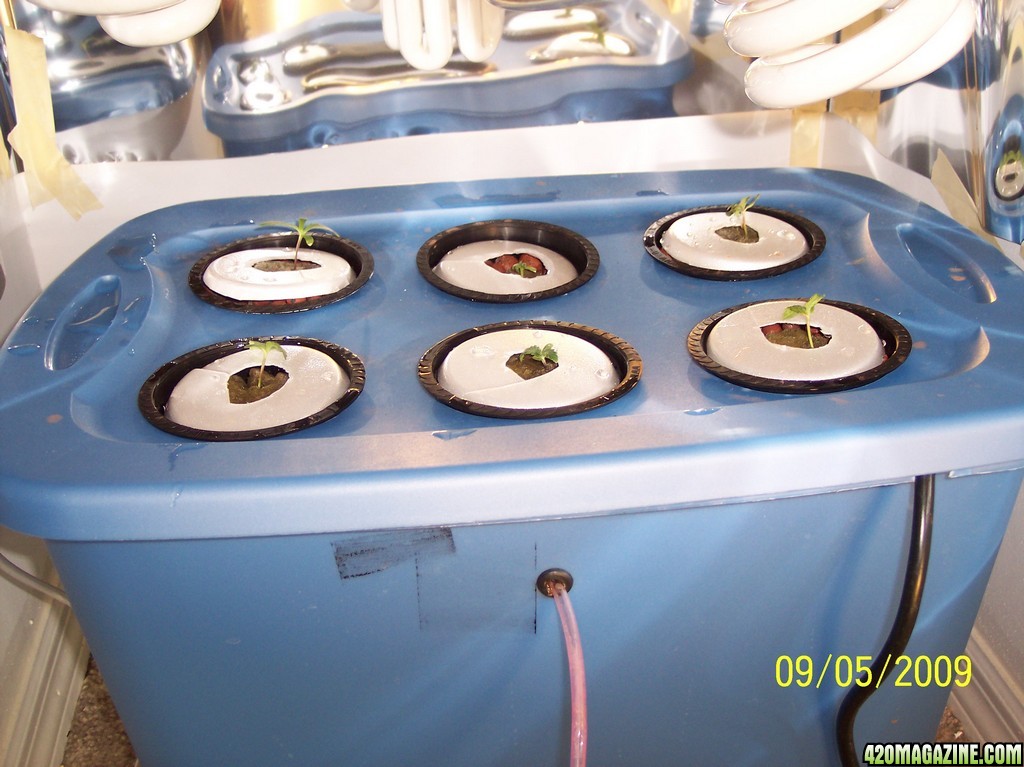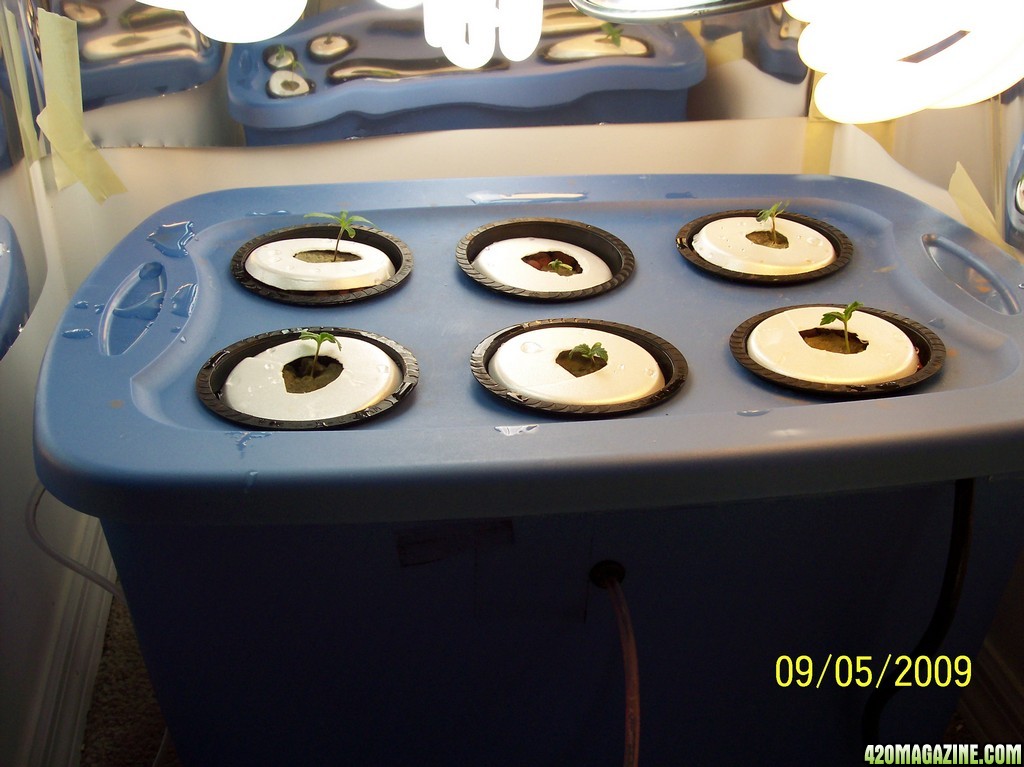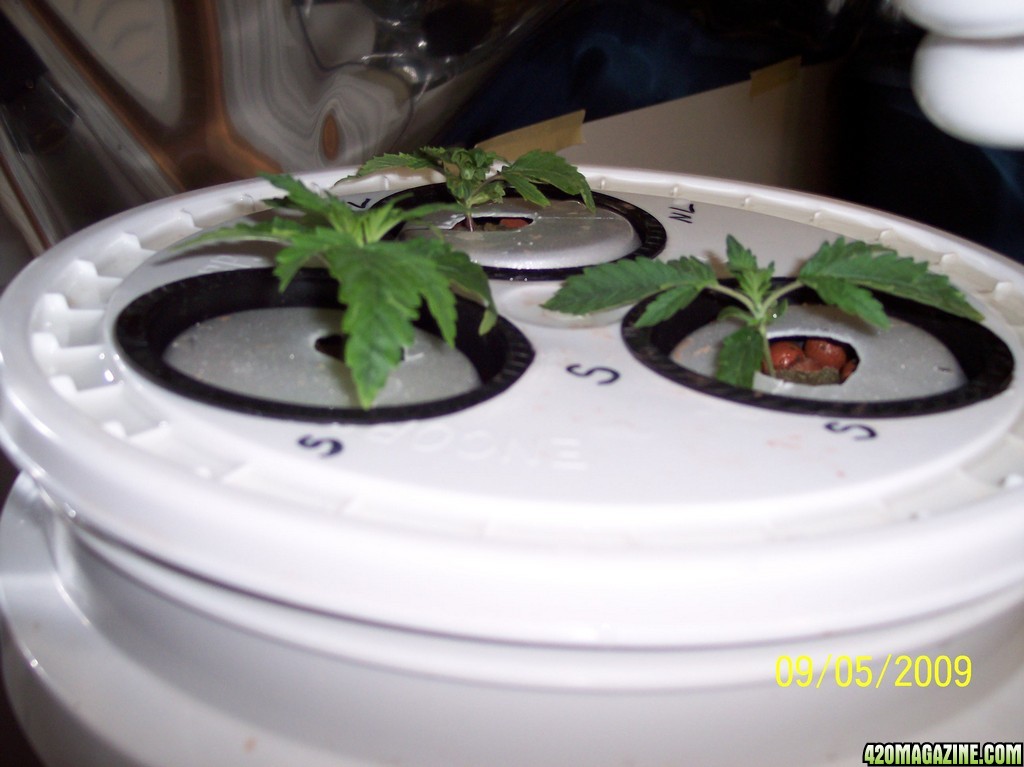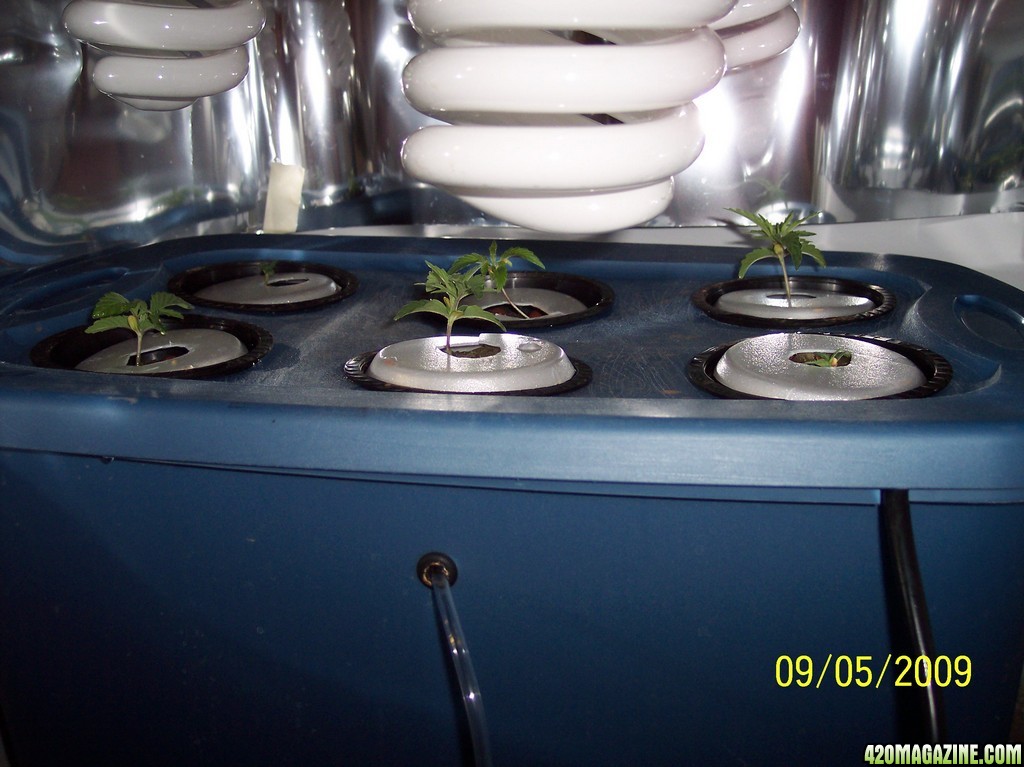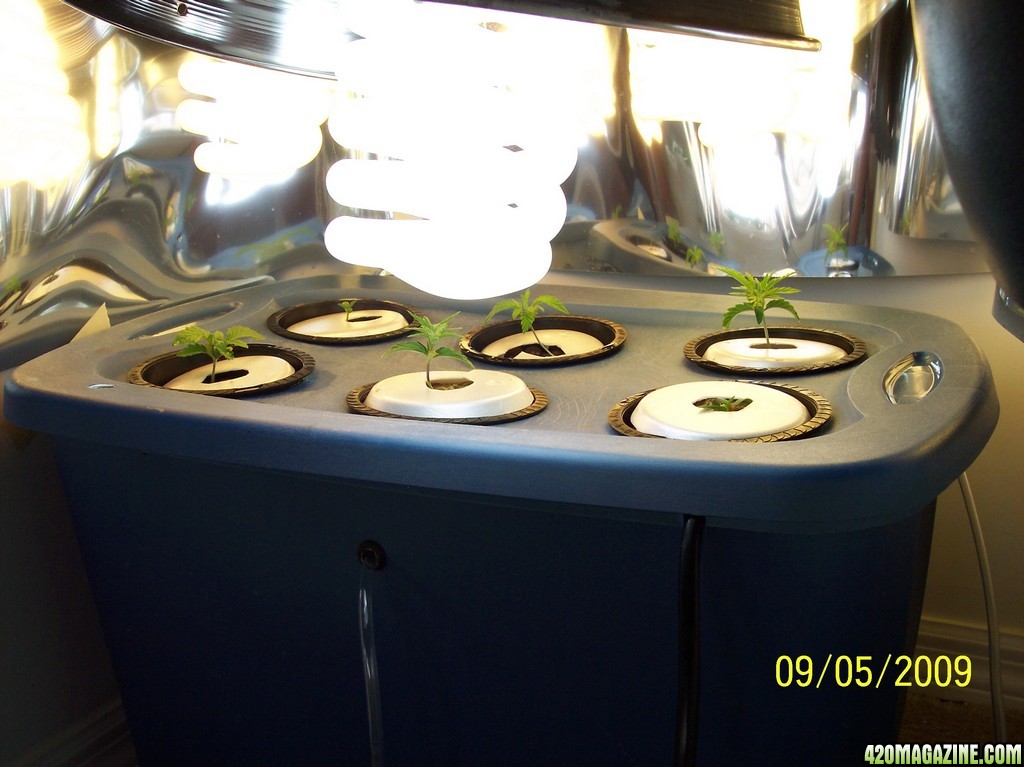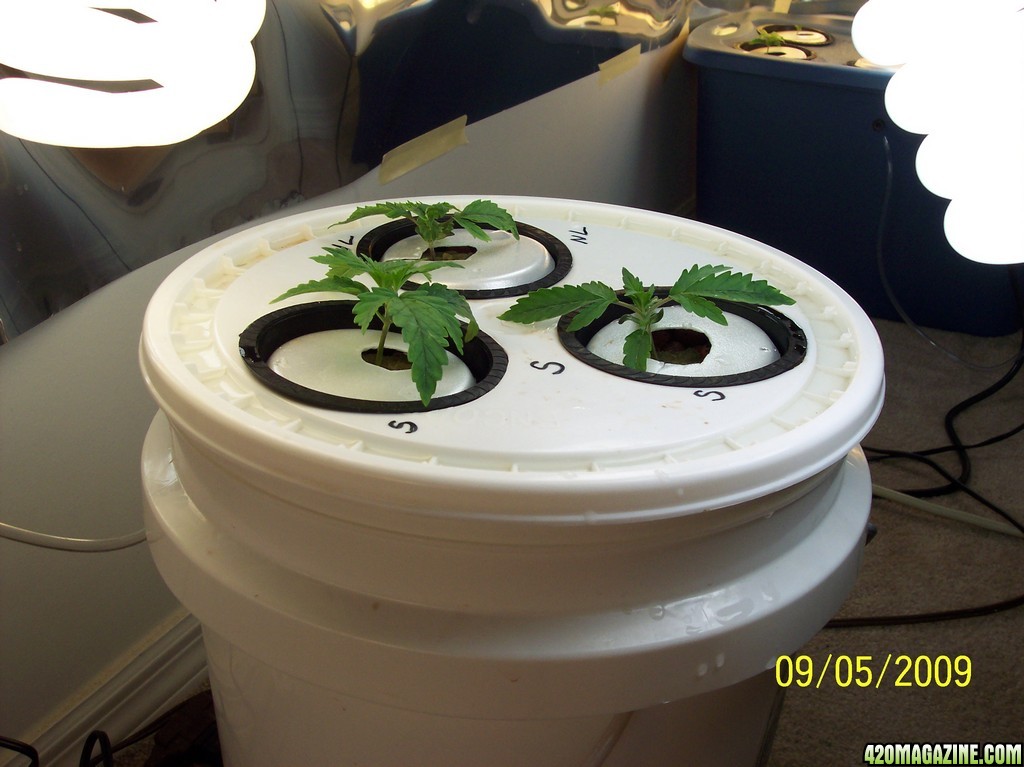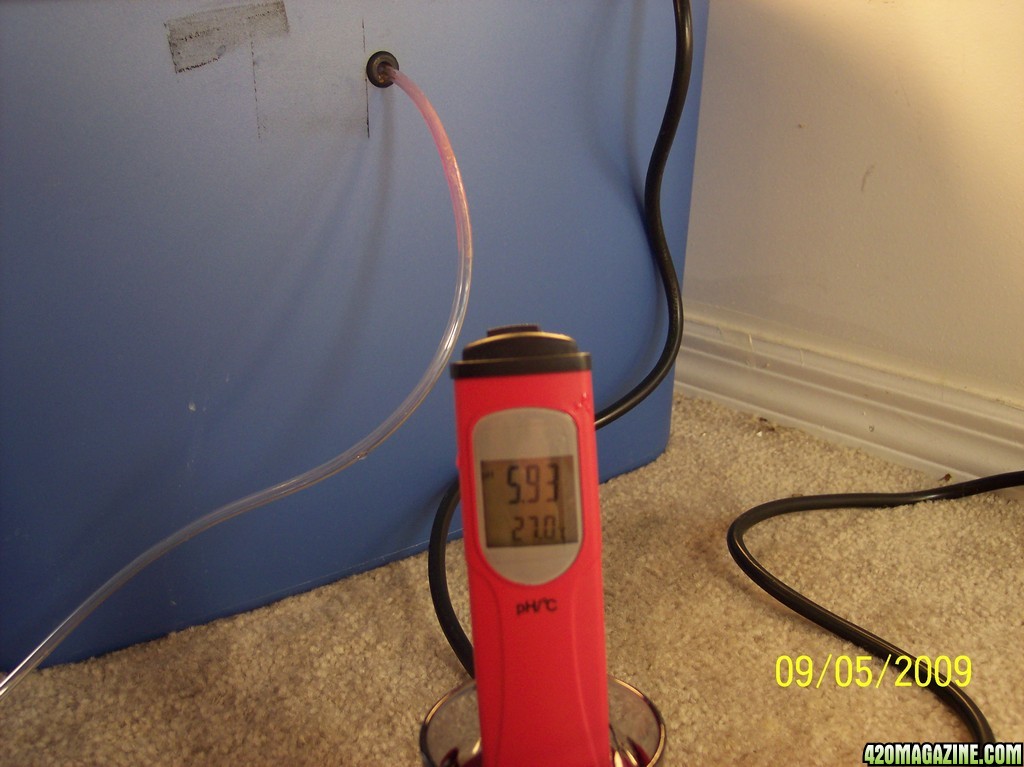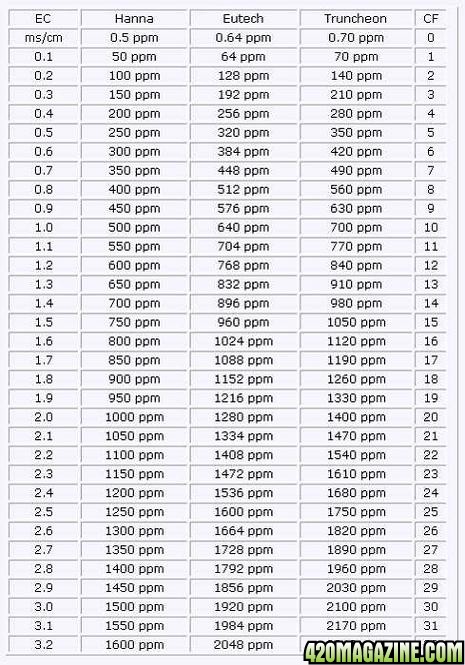- Thread starter
- #81
Re: -------'s Deep Water Culture Tutorial, SH Kit & DIY
All of the 26, 42, 65, 85 and 105 watt bulbs I have discussed here have regular sized sockets and the bulbs fit into any normal socket.
200 watt CFLs and larger have a much larger socket, called a mogul socket.
8' Power Cord with Mogul Socket
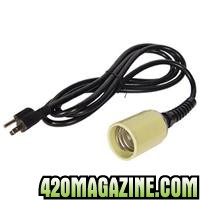
If you use a 200 watt CFL bulb or larger, you will need a Mogul Socket.
This is a Mogul To Standard Bulb Adapter
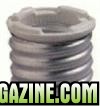
I can not find the words to accurately describe those Parabolic Reflectors, except to say they are AWESOME! The MYLAR does not reflect nearly as much light as a Parabolic Reflector, and I've never seen any reflector that compares. They just fit the base of a 105 or 200 watt CFL.
They are huge and yet lighter in weight than any reflector I have ever seen.
Here you see one with a Mogul Socket and cord:
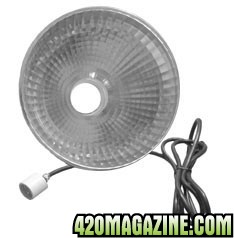
All of the 26, 42, 65, 85 and 105 watt bulbs I have discussed here have regular sized sockets and the bulbs fit into any normal socket.
200 watt CFLs and larger have a much larger socket, called a mogul socket.
8' Power Cord with Mogul Socket

If you use a 200 watt CFL bulb or larger, you will need a Mogul Socket.
This is a Mogul To Standard Bulb Adapter

I can not find the words to accurately describe those Parabolic Reflectors, except to say they are AWESOME! The MYLAR does not reflect nearly as much light as a Parabolic Reflector, and I've never seen any reflector that compares. They just fit the base of a 105 or 200 watt CFL.
They are huge and yet lighter in weight than any reflector I have ever seen.
Here you see one with a Mogul Socket and cord:




